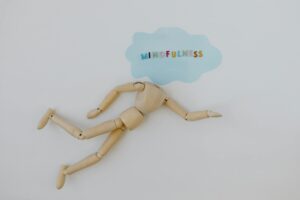Since its inception, art has been an essential tool for reflection, education, and social change. The psychedelic era, often associated with the counterculture movement of the 1960s, is one such epoch where art played a dramatic role in instigating and perpetuating socio-cultural transformation. Psychedelic art, in its vibrant palette, intricate designs, and mind-bending dimensions, transcended mere aesthetics and provoked radical self-expression, political activism, and a wave of liberation movements that directed a powerful youth rebellion.
Psychedelic art, known for its vivid colors and complex patterns, emerged from the counterculture movement flourishing in the 1960s and 1970s. This wave was largely catalyzed by a generation not afraid to challenge the establishment, question societal norms, and strive for a more egalitarian society. Psychedelic art, intertwined with this socio-political rebellion, became a means of expressing their desire for change.
A critical driving force within the counterculture movement was the notion of radical self-expression< a href="https://openscholarship.wustl.edu/cgi/viewcontent.cgi?article=1935&context=law_lawreview">. Psychedelic art, with its disregard for traditional artistic norms, fully embraced this concept. The intense, swirling visuals often painted a narrative of the artist’s mind-altering experiences, usually facilitated by psychedelics such as Lysergic Acid Diethylamide (LSD) or psilocybin mushrooms. This form of art was a path to externalizing the cognitive liberation psychedelic substances offered.
The fusion of art and psychedelics also galvanized political activism during the era. Protest art became synonymous with psychedelic art—both echoing pleas for peace amidst the Vietnam War, advocating for civil rights, and staunchly opposing nuclear armament. Psychedelic art handed the youth a megaphone and a banner, inspiring them to question authority and stand up against governance they deemed oppressive.
In addition, psychedelic art played a significant role in liberation movements, particularly those focused on sexual emancipation and women’s rights. Figures like the radical feminist artist, Miriam Schapiro, used psychedelic imagery to challenge patriarchal norms and champion female liberation. Psychedelic art was harnessed as a tool to depict embodiment in a new, radical light, pushing boundaries and challenging societal norms.
Equally noteworthy is how the youth rebellion of the 60s and 70s markedly intertwined with the psychedelic art movement. The youth, seen at the time as non-conformists and revolutionaries, adopted psychedelia as their cultural dialog. Album covers, posters for rock concerts, murals on university walls — psychedelic art was omnipresent, echoing the youth’s resistance to conventional systems of power.
In conclusion, psychedelic art, with its dazzling visuals and hallucinatory themes, was far more than just a creative endeavor. Its ripple effects on society were tremendous, instigating radical self-expression, propelling political activism, fueling liberation movements, and giving a voice to a powerful youth rebellion. The art form was transformative, not just for the individual but society at large, iconically encapsulating the spirit of an era.
Sources:
Boise State University
Washington University School of Law
Taylor & Francis Online
JSTOR
Huffington Post






